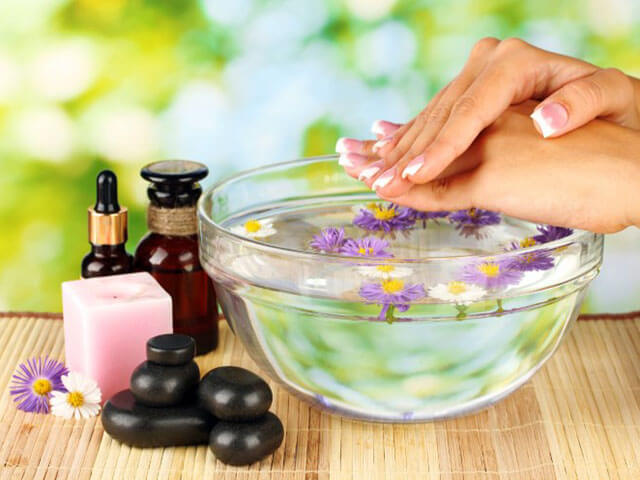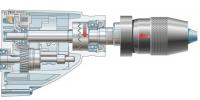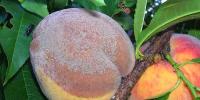Treatment of different types of abscesses on the finger: how to cure an abscess on the finger at home
An abscess on a finger or toe is a common problem in adults, adolescents and even babies from 6 months to 1 year.
Often, abscesses on the finger go away on their own and are relatively easy to treat.
But it also happens that the patient needs surgical care.
At intradermal abscess the finger swells from the side of the palm, a bubble with pus appears there. The appearance of an abscess, as a rule, is caused by microbes that have penetrated the skin when it is damaged (as a result of a poorly performed pedicure or manicure, as well as a deep prick, abrasion, scratch or splinter).
At subcutaneous abscess the affected phalanx of the fingers thickens, and the skin turns red. There is a throbbing pain when you try to move your finger.
note
If the infectious process is "caught" before the formation of a large abscess, antibiotic treatment may be prescribed. If there is no improvement, pus drainage is required.
When subungual abscess the swelling usually develops within a few days. Without proper treatment, the infection can progress and lead to serious complications, such as detachment of the nail plate from the nail bed.
Acute purulent tendovaginitis (tendon felon) is a potentially serious infection and requires prompt treatment.
- It can lead to tendon dysfunction and permanent limitation of finger and hand function.
- It may be the result of a purulent or infectious process, as well as a rheumatic disease or prolonged microtraumatization.
Paronychia- infection around the nail, in the area of the transverse periungual roller. As a rule, such an abscess on the finger is caused by an ingrown toenail or inaccurate trimming of a burr that left a wound - a "gateway" for infection (most often a bacteria called "Staphylococcus aureus").
- The skin around the proximal part of the nail is swollen and the toe is quite painful.
- If an infection is detected early, the finger can be successfully treated with soaking in warm, soapy water several times a day and taking oral antibiotics.
- If pus is present around the base of the nail, drainage is needed.
Articular and bone abscess on the finger. This is a purulent process that proceeds with the "participation" of the joint and bone of the phalanx of the finger. The movement of the affected finger is almost impossible, as severe swelling and pain occur.
herpetic abscess caused by the herpes simplex virus and is most often localized on the fingertip.
- Pain, itching, and swelling are noted, followed by well-defined blisters.
- Usually localized only on one finger.
Treatment of different types of abscesses on the finger: how to cure an abscess on the finger at home
 For acute paronychia in adults, hot compresses and possibly a short course of honey are often sufficient. drugs ("Erythromycin", "Tetracycline", etc.).
For acute paronychia in adults, hot compresses and possibly a short course of honey are often sufficient. drugs ("Erythromycin", "Tetracycline", etc.).
If a lot of pus has accumulated inside the abscess, a minor surgical operation will be required.
The procedure is performed under local anesthesia or without it at all, if the skin over the abscess turned white or yellow (this indicates nerve damage).
For chronic paronychia treatment consists of avoiding predisposing factors and using antiseptic (bandage with Vishnevsky ointment at night), regenerating (Bepanten cream), antibacterial or antifungal agents.
Surgical intervention is indicated only if medical treatment of an abscess on the finger fails.
If the abscess involves tissue in the finger (panaritium), the doctor may recommend cutting the abscess and draining the pus. The opening of the panaritium is performed under local anesthesia.
To prevent further spread of infection with herpetic panaritium, it is enough to tie a dry gauze bandage on the injured finger. Treatment for infectious tendovaginitis and (or) abscess in deep fascial spaces consists of making the correct diagnosis, antibiotic therapy, and consulting an experienced surgeon. If only the finger is affected, the operation is performed under local anesthesia, if the inflammation has passed to the hand, under general anesthesia.
note
If the abscess is located under the nail, then either the complete removal of the nail plate (if it has exfoliated from the nail bed), or the opening of the nail over the accumulation of pus, or excision of the edge of the nail plate can be performed.
How to treat an abscess on the finger at home? Food will come to the rescue - potatoes and onions.
- Take a raw potato and cut it into thick slices.
- Sections should be 3 cm thick.
- Place these potato slices on the boil, and wrap a bandage over the top.
- Change the potato compress every 3 hours.
Onions contain chemicals that have antiseptic properties.
- Take a raw onion and cut into thick slices.
- Place these pieces on the affected areas of the skin, wrap a cloth on top.
- After three hours, remove the onion and replace with fresh.
- Repeat the procedure until the swelling is reduced.
Instead of raw onions, you can also use one half of a baked onion.
Here is an easy way to cure an abscess on your finger with hot water:
- Fill a saucepan with hot water.
- Add some salt to the water.
- Soak the affected finger in this water for fifteen to thirty minutes.
- Repeat four times a day.
- Hot water will make the skin soft and the infection will "come out" on the surface of the skin.
You can make five-minute baths with a weak solution of potassium permanganate (the water should be pale pink) and smear the abscess with brilliant green or peroxide.
Turmeric helps in treating inflammation and infection which are the main causes of skin abscess.
- Mix turmeric with milk or water and apply the paste to the boil.
- Leave on for three hours, then rinse with water.
How to cure an abscess on the finger of a child:
- An abscess can occur even in a baby recently brought from the hospital. In this case, the famous pediatrician Komarovsky E.O. advises to show the baby to the pediatrician, and before that put on the finger a wet, thick bandage soaked in a water-salt solution (a tablespoon of table salt per cup of water). Moisturize the bandage every few hours.
- You can get rid of an abscess in a child with alcohol and a chicken egg. You need to break the egg, place the protein and yolk separately. In the protein, stirring with a spoon, add 30-40 ml of 96% alcohol and strain through cheesecloth (flakes will remain on it, as the protein will curdle). Then put gauze on a sore spot, wrap it with a cloth on top and change the bandage after 7 hours.
Prevention of boils
It is difficult to prevent internal boils, as they are often a complication of other diseases, but you can reduce the risk of skin abscesses by following simple rules.
- Wear protective gloves if you are going to work with wood or other materials that can cause splinters.
- People with diabetes who prick their fingers for home blood tests should first wash their finger with an antiseptic.
- Try to avoid contact with people who have herpes to prevent a herpes infection.
- Wash your hands regularly and do not share towels with other family members.




